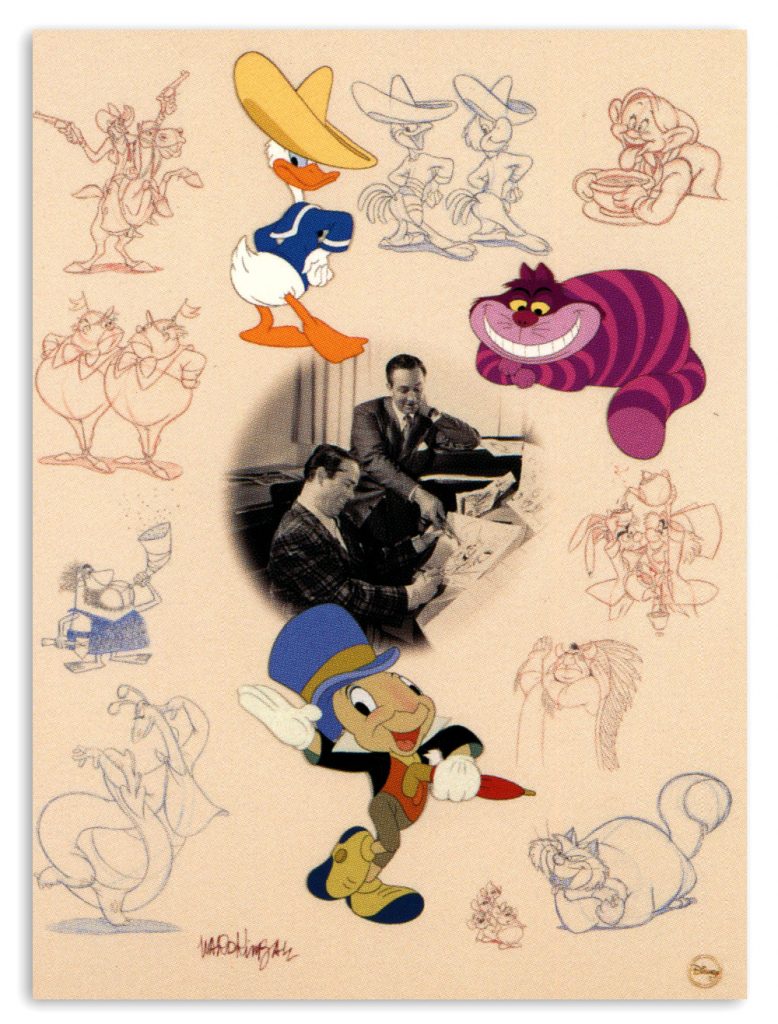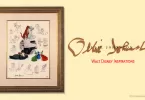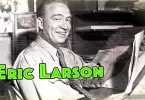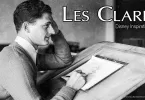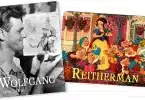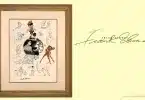Among all of the notable figures to emerge into Disney’s limelight, Ward Kimball numbers among the top. He was a man of many talents, and in fact, his biography, The Life and Times of Ward Kimball: Maverick of Disney Animation, opens by talking about his three greatest passions, which included art, antique vehicles, and music. The things that Ward did and the life that he lived stand as an inspiration to all of us. So if you’d like to learn more about the man behind some of Disney’s most famous animations, read below, and we’ll go on a journey through this man’s interesting and impactful life.
A Lifelong Passion for Trains
If there’s one way, to sum up Ward’s life, it’s that he was different from the day he was born. He was born on March 4, 1914, in Minneapolis, and his mother, Mary Kimball, always liked to recount a story of that day.
You see, one of Ward’s biggest passions in life was trains. And on the day he was born, Mary struggled through a difficult labor. As she did, she could see through the hospital’s window a slow freight train going by over a precarious bridge—and she wondered if, while giving birth, she’d end up witnessing a horrifying train crash should that bridge collapse. Mary liked to say that this is where Ward’s passion came from, that she worried so much about that train while he was coming into this world that something of her thoughts must have passed on to him.
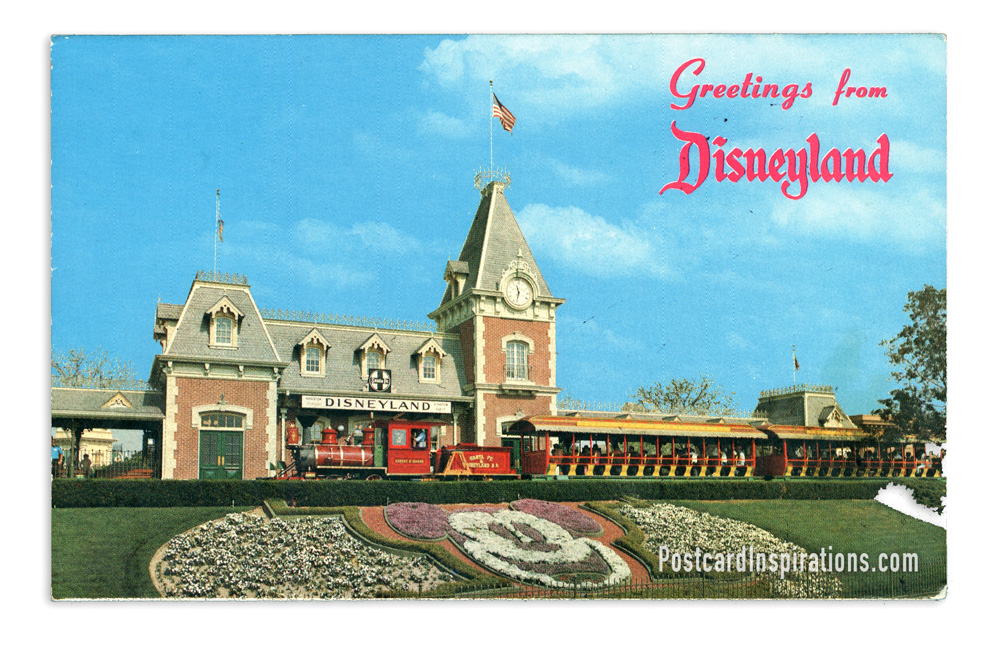
At the Disneyland Depot, where a scaled-down replica of a passenger train from another era emerges from the station to take guests on a scenic tour of Disneyland, a floral Mickey Mouse welcomes them.
That passion for trains would follow Ward throughout his life. As a kid, he spent lots of time playing with toy trains. And later in life, he turned his three-acre backyard into an actual working railroad called the “Grizzly Flats Railroad,” complete with working locomotives. In fact, this is how the Disneyland Railroad came to be. Walt Disney took inspiration from Ward to create the railroad, and the Frontierland Train Station is inspired directly by the train station Ward had built for himself. Today, Disneyland’s Engine No. 5 is named Ward Kimball in honor of the animator.
Music was another of Ward’s passions, one that he’d grow into later in life. After he began working at Disney, he realized that many of the Disney animators had much in common, including a fondness for jazz. At one point, after many chats over lunch about music, Kimball, who was a trombonist, and Frank Thomas, a pianist, got into a jam session—and that’s how the Firehouse Five Plus Two was born.
Leader of Firehouse Five Plus Two
The group would go on to become quite a famous Dixieland jazz band. So famous, in fact, that Ward was more well-known as the band’s leader than as an animator. They produced several records between the 1950s and the 1070s, and in the 1950s, they even made a couple of television appearances.
Ward Kimball, The Artist
One thing to understand about Ward’s upbringing is that he came from a poorer background, and his family often struggled financially. At times, he’d go to live with his grandmother at Hastings Hotel in Minneapolis when times were too tight at home. When he was six and living with his grandmother—that’s when his next great passion appeared.
In Minneapolis, he used to love to read newspaper comics, and this may be what inspired his art because, at that age, he’d imitate those comics by creating his own. Which, adorably, he’d refer to as the Little Minneapolis Journal, a publication that he would claim had a grand “subscription list of three persons.”
From that point on, Ward would spend his childhood playing with toy trains and trolleys and creating art. There was a brief time in which he didn’t create much, but by the time he was in the fifth grade, a traveling art teacher who would come to his classes periodically helped him regain an interest in art.

This led to him taking a correspondence course in art from W.L. Evans, specifically about cartooning. And from there, his grandmother sent some of Ward’s drawings to the New York animator Paul Terry, who worked with Aesop’s Fables Studio and, later, TerryToons, where he produced Heckle and Jeckle and Mighty Mouse. Terry sent a reply to Ward’s submissions, encouraging the youngster to come to New York someday and look him up.
By 1930, young Ward’s interest in cartooning began to flourish. At this point, he was back with his parents, now living in Ventura, California, and he’d started attending weekly Mickey Mouse Club meetings. Here, he got to watch all kinds of live-action comedy shorts along with animated films. Ward rapidly developed a fondness for Disney cartoons, which he considered much more technologically advanced than those of other studios—particularly since the sound in television was a relatively new development, and Disney was creating animations to fit the sound, whereas others were making sound to fit older soundless cartoons.
When Ward entered high school, he channeled his inspiration from the cartoons he’d watched into art, entering contests against other students from all over Ventura County—including seniors who had been working hard to attend art school after graduation. Ward, a freshman at the time, came away with first prize for cartooning, a stunning accomplishment that fueled his interest in animating despite the fact that his art education, particularly compared to his peers, had been sporadic at best.
From that point on, Ward found ways to work as an artist. He hired himself out to a variety of local businesses, and he worked for his school’s newspaper. He designed logos, hired out to paint a mural in a hamburger shop, and more. Once he graduated from high school, he went on to spend a brief amount of time in art school—though by all reports, his college experience lasted for around a year before he quit school.
His parents weren’t happy that he’d left college, and after briefly throwing him out for a couple of weeks, they welcomed him back home, telling him that he needed to find a job. This was during the Great Depression, however, and Ward didn’t know how he’d be able to do that.
An art school friend of Ward’s told him of an opening for artists at Disney. Ward was ambivalent—at that point, he saw himself painting for publications like Redbook or The Saturday Evening Post. Still, he put a portfolio together, and on Friday, March 30, 1934, his mother drove him to Los Angeles, where he applied for Disney. Walt Disney himself took a look at Ward’s portfolio and told him that he should be ready for work the following Monday.
The rest, as they say, is history. Some of his first Disney animation credits include Silly Symphonies animations dating back to 1934, such as The Wise Little Hen and The Flying Mouse. Ward would go on to become one of Disney’s Nine Old Men, and his film credits include some of Disney’s most famous works, including Cinderella, Alice in Wonderland, Peter Pan, Snow White, and the Seven Dwarves, and more.
In fact, wherever you look throughout Disney film history, there’s a good chance Ward’s name will feature somewhere in the credits—and it’s all because Ward Kimball was a man of many passions and the determination to make those passions come alive.

